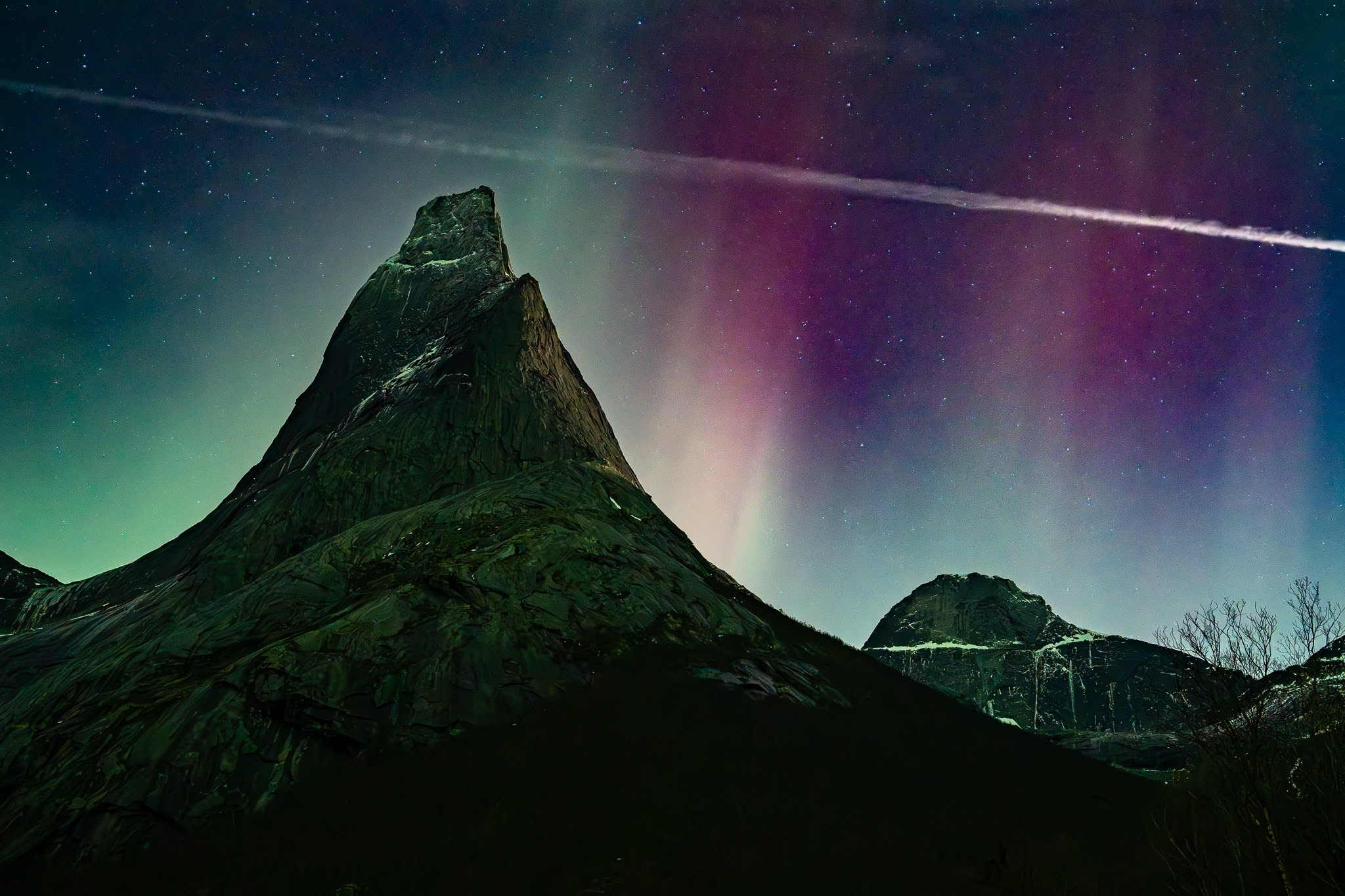It is not each day you get to look at a rocket launch right into a sky glowing with colourful auroras — and it is even rarer to see that rocket go away swirling clouds in its wake as a part of a NASA science experiment.
However that is precisely what Ivar Sandland of Bodo, Norway noticed on Nov. 10 throughout a minor geomagnetic storm. Sandland operates Nordland Adventures, a tour and journey firm in Northern Norway.
“I went on a highway journey from Bodo to Tromso to go to my daughter, digital camera at all times on the prepared,” Sandland instructed House.com. “On the best way again (midway), I ended by the foot Mt. Stetind – Norway’s nationwide mountain. I’ve at all times wished to see Northern lights above the summit. It occurred.”
“Once I noticed the rocket launch, I used to be very shocked,” Sandland stated. “I assumed it was a really unusual form of cloud. Then checked from the place it got here from and found out it might be from Andøya House Heart. The subsequent day I learn on native information there had been a rocket launch.”

Because it seems, that rocket launch was really a double-header, and each rockets launched have been a part of NASA’s Vorticity Experiment (VortEx). The mission seeks to raised perceive how vitality flows via the turbopause, a portion of Earth’s environment the place the mesosphere and the thermosphere meet some 56 miles (90 kilometers) up.
To check these interactions, researchers launched a sounding rocket (a smaller, sub-orbital car utilized in scientific analysis) loaded with trimethyl aluminum, a compound utilized in electronics and semiconductor fabrication.
As soon as launched into the air, the wisps of trimethyl aluminum fashioned swirls and vortices within the sky that may assist reveal how gravity waves behave and work together at this stage of the environment.
![NASA VortEx Campaign from @Andøya Space [LAUNCHED] | Day 14 - YouTube](https://img.youtube.com/vi/jGN6LEnZy7A/maxresdefault.jpg)
Andøya House Heart is a rocket launch facility on Andøya island in northern Norway that hosts frequent launches of sounding rockets. Resulting from its location close to the Arctic Circle, the positioning is good for launch experiments geared toward finding out geomagnetic exercise, auroras and the results of area climate.
That is as a result of when charged particles from the solar attain Earth, our planet’s magnetic discipline funnels them towards the north and south poles. When these particles work together with atmospheric gases, they launch vitality within the type of gentle, creating the beautiful gentle reveals we name the aurora borealis, or the northern lights, and the aurora australis, or the southern lights.




